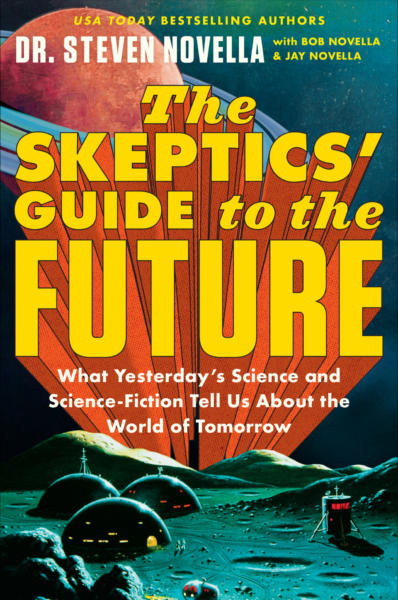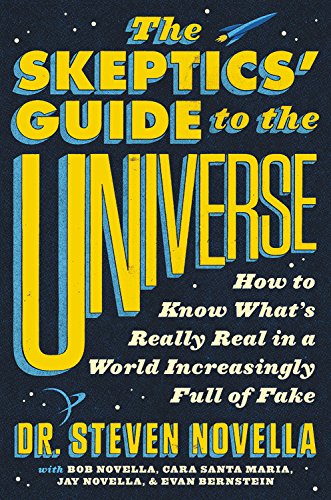Jan
02
2024
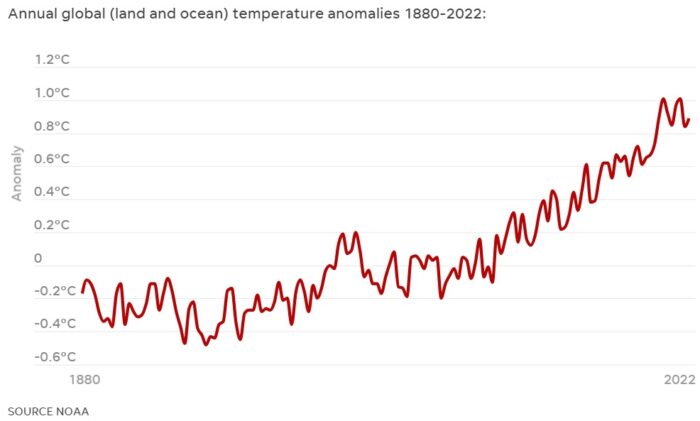 What everyone knew was coming is now official – 2023 was the warmest year on record. This means we can also say that the last 10 years are the hottest decade on record. 2023 dethrones 2016 as the previous warmest year and bumps 2010 out of the top 10. Further, in the last half of the year, many of the months were the hottest months on record, and by a large margin. September’s average temperature was 1.44 C above pre-industrial levels, beating the previous record set in 2020 of 0.98 C. The average for 2023 is 1.4 C, beating the previous record in 2016 of 1.2 C. This also makes 2023 probably the warmest year in the last 125,000 years.
What everyone knew was coming is now official – 2023 was the warmest year on record. This means we can also say that the last 10 years are the hottest decade on record. 2023 dethrones 2016 as the previous warmest year and bumps 2010 out of the top 10. Further, in the last half of the year, many of the months were the hottest months on record, and by a large margin. September’s average temperature was 1.44 C above pre-industrial levels, beating the previous record set in 2020 of 0.98 C. The average for 2023 is 1.4 C, beating the previous record in 2016 of 1.2 C. This also makes 2023 probably the warmest year in the last 125,000 years.
There is no mystery as to why this is happening, and it’s exactly what scientists predicted would happen. Remember the global warming “pause” that was allegedly happening between 1998 and 2012? This was the pause that never was, a short term fluctuation in the long term trend and a bit of statistical voodoo. Global warming deniers were declaring that global warming was over, it was never real, it was just a statistical fluke and the world was regressing back to the mean. Meanwhile, scientists said the long term trend had not altered and predicted the next decade would be even warmer. In retrospect, it turns out that during the alleged “pause” more heat was going into the oceans and was not fully reflected in surface temperatures.
The best test of a scientific hypothesis is its ability to make predictions about future data. The deniers were predicting that the Earth would simply return to baseline temperatures, while the scientific community were united in predicting that the next decade (now the past decade) would see continued warming.
Continue Reading »
Dec
05
2023
 One of the greatest mysteries of modern science is how to unite the two overarching theories of physics – quantum mechanics and general relativity. If physicists could somehow unite these two theories, which currently do not play well together, then we might get to a deeper “one theory to rule them all.”
One of the greatest mysteries of modern science is how to unite the two overarching theories of physics – quantum mechanics and general relativity. If physicists could somehow unite these two theories, which currently do not play well together, then we might get to a deeper “one theory to rule them all.”
Quantum mechanics essentially says that we do not live in a classical universe. Classical physics as it operates on the macroscopic scale is just the surface level, the end result of a quantum universe at the near atomic and smaller scale. At the quantum scale (not to be confused with the Quantum Realm fantasy of Marvel – don’t get me started), reality is quantized and probabilistic. Things that seem like magic on the macro scale are reality at the quantum scale, like wave particle duality and entanglement.
General relativity, rather, deals with the super big scale, spacetime itself. Einstein postulated that gravity is the result of spacetime being curved. Freely moving objects actually always travel in a straight line, but through curved space. Mass curves space, which is how mass creates gravity. This is, as least, a reasonable lay person’s understanding of these concepts.
Continue Reading »
Oct
10
2023
 Exactly when Homo sapiens came to the Americas has not been firmly established, and new evidence has just thrown another curve ball into the controversy.
Exactly when Homo sapiens came to the Americas has not been firmly established, and new evidence has just thrown another curve ball into the controversy.
There is evidence of a large culture of humans throughout North America from 12-13,000 years ago, called the Clovis Culture. The Clovis people are known almost entirely from the stone points they left behind, which have a characteristic shape – a lance-shaped tip with fluting at the base. The flutes likely made it easier to attach the points to a shaft. Archaeologists have collected over 10,000 Clovis points across North America, indicating the culture was extensive. However, we only have a single human skeleton associated with Clovis points – the burial site of a 1 – 1.5 year old boy found at the Anzick Site, in Wilsall, Montana. This did allow for DNA analysis showing the the Clovis people were likely direct ancestors of later Native Americans.
Evidence of pre-Clovis people in the Americas has been controversial, but over the years enough evidence has emerged to doom the “Clovis first” hypothesis in favor of the existence of pre-Clovis people. The latest evidence came from the Cooper’s Ferry site in Idaho, which appears to be a human habitation site with hearths and animal bones, carbon dated to 16,500 years ago. But there are still skeptics who say it is not absolutely clear that the site was the result of human habitation. Sometimes carbon dating is called into question – was there mixing of material, for example. The Clovis and pre-Clovis evidence also tends to contain either artifacts or bones, but rarely both together, which makes it difficult to nail down the timing.
Continue Reading »
Oct
03
2023
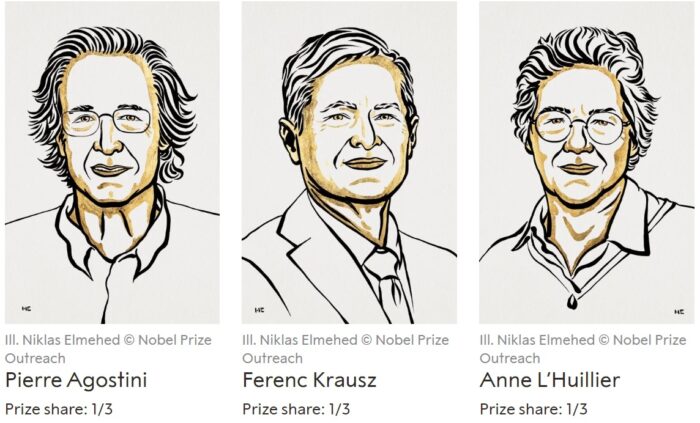 One attosecond (as) is 1×10−18 seconds. An attosecond is to one second what one second is to the age of the universe. It is an extremely tiny slice of time. This year’s Nobel Prize in physics goes to three scientists, Pierre Agostini, Ferenc Krausz, and Anne L’Huillier, whose work contributed to developing pulses of light that are measured in attoseconds.
One attosecond (as) is 1×10−18 seconds. An attosecond is to one second what one second is to the age of the universe. It is an extremely tiny slice of time. This year’s Nobel Prize in physics goes to three scientists, Pierre Agostini, Ferenc Krausz, and Anne L’Huillier, whose work contributed to developing pulses of light that are measured in attoseconds.
Why are such short pulses of light useful? Because they allow for experiments that capture the physical state of processes that happen extremely fast. In particular, they are the first light pulses fast enough to capture information about the state of electrons in atoms, molecules, and condensed matter.
Anne L’Huillier, only the fifth woman to win the Nobel Prize in Physics, discovered in 1987 that when she shined infrared light through a noble gas it would give off overtones, which are other frequencies of light. The light would give extra energy to atoms in the gas, some of which would then radiate that energy away as additional photons of light. This was foundational work that made possible the later discoveries by Agostini and Krausz. Essentially these overtones were harmonic frequencies of light, multiples of the original light frequency.
L’Huillier and her colleagues later published in 1991 follow up work explaining a plateau observed in the harmonic pulses of light. They found that the high-harmonic generation (HHG) plateau was a single electron phenomenon. At the time they proposed that, in theory, it might be possible to exploit this phenomenon to generate very short pulses of light.
In 2001 both Krausz and Ferenc, in separate experiments, were able to build on this work to produce attosecond scale pulses of light. Krausz was able to generate pulses of 650 attoseconds, and Ferenc of 250 attoseconds. Here are some technical details:
Continue Reading »
Sep
28
2023
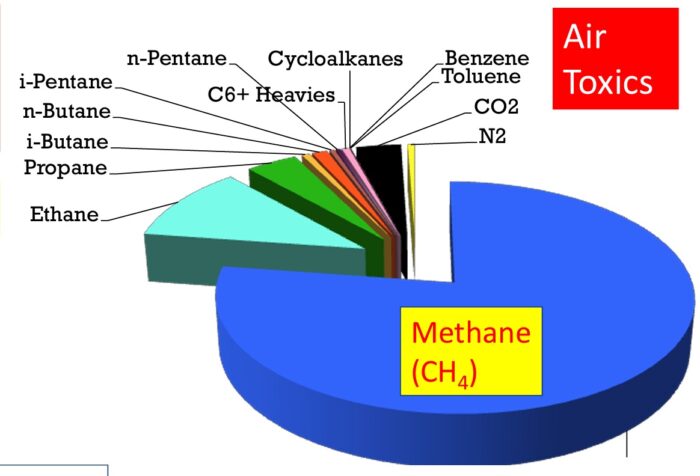 In the last 18 years, since 2005, the US has decreased our CO2 emissions due to electricity generation by 32%, 819 million metric tons of CO2 per year. Thirty percent of this decline can be attributed to renewable energy generation. But 65% is attributed to essentially replacing coal-fired plants with natural gas (NG) fired plants. The share of coal decreased from 50% to 23% while the share of NG increased from 19% to 38%. Burning coal for energy released about twice as much CO2 as burning NG. Plus, NG power plants are more efficient than coal. The net result is that NG releases about 30% of the CO2 per unit of energy created as does coal.
In the last 18 years, since 2005, the US has decreased our CO2 emissions due to electricity generation by 32%, 819 million metric tons of CO2 per year. Thirty percent of this decline can be attributed to renewable energy generation. But 65% is attributed to essentially replacing coal-fired plants with natural gas (NG) fired plants. The share of coal decreased from 50% to 23% while the share of NG increased from 19% to 38%. Burning coal for energy released about twice as much CO2 as burning NG. Plus, NG power plants are more efficient than coal. The net result is that NG releases about 30% of the CO2 per unit of energy created as does coal.
But – the picture is more complicated than just calculating CO2 release. The implications of a true comparison between these two sources of energy has huge implications for our attempts at reducing climate change. It’s clear that we should phase out all fossil fuels as quickly as possible. But this transition is going to take decades and cost trillions. Meanwhile, we are already skirting close to the line in terms of peak warming and the consequences of that warming. We no longer have the luxury of just developing low carbon technology with the knowledge that it will ultimately replace fossil fuels. The path we take to get to net zero matters. We need to take the path that lowers greenhouse gas (GHG) emissions as quickly as possible. So when we build more wind, solar, nuclear, hydroelectric, and geothermal plants, do we shut down coal, natural gas, or perhaps it doesn’t matter?
If we look just at CO2, it’s a no-brainer – coal is much worse and we should prioritize shutting down coal-fired plants. This may still be the ultimate answer, but there is another factor to consider. NG contains methane, and methane is also a GHG. Per molecule, methane causes 80 times the warming of CO2 over a 20 year period. So any true comparison between coal and NG must also consider methane. (A little methane is also released in coal mining.) But considering methane is extremely complicated, and involves choices when looking at the data that don’t have any clear right or wrong answers.
Continue Reading »
Jul
07
2023
 Are attitudes towards genetically modified organisms (GMOs) in our agriculture softening? Back in 2015 a Pew survey found that the gap between public opinion and that of scientists was greatest on acceptance of GMOs (more than any other topic surveyed), with a 51% gap. But more recent data shows declining opposition. Regulators are also softening their stance, with Mexico walking back a ban on GMO corn from the US, and the EU considering softer rules on GMOs. Some countries, like the US, have also adopted new terminology, such as bioengineered, and carved out separate rules for crops made with altered genes but not with transgene insertions.
Are attitudes towards genetically modified organisms (GMOs) in our agriculture softening? Back in 2015 a Pew survey found that the gap between public opinion and that of scientists was greatest on acceptance of GMOs (more than any other topic surveyed), with a 51% gap. But more recent data shows declining opposition. Regulators are also softening their stance, with Mexico walking back a ban on GMO corn from the US, and the EU considering softer rules on GMOs. Some countries, like the US, have also adopted new terminology, such as bioengineered, and carved out separate rules for crops made with altered genes but not with transgene insertions.
We still have a way to go, and there is still enough opposition to slow adoption of useful agricultural technology. I like to think this is because the science is slowly winning the day. I do think many environmentalists have their heart in the right place, but sometimes get distracted by ideological positions, such as an aversion to anything “unnatural” or high tech. But if the stakes get high enough, the more moderate environmentalists can change their position. I think we are seeing this with nuclear power and the need to combat global warming. And I think we are seeing this with GMOs and the need to feed the world without destroying the environment. The benefits of GMOs are ultimately just too great to ignore.
But there is a lot of inertia in the anti-GMO propaganda that Greenpeace, the organic lobby, and others have been spreading for two decades. I was just recently asked about one specific claim that reflects the nature of this propaganda and how sticky it can be – aren’t GMOs killing the butterflies? The short answer is no, but as always the full story has lots of details. Here is a typical headline from the Environmental Working Group (who I personally find to be more ideological than science-based) – GMO-Linked Herbicide May Doom Monarch Butterflies. This framing was lazily reproduced by most mainstream reporting, but it is nothing but anti-GMO propaganda.
Continue Reading »
Mar
31
2023
 One of the challenges of paleontology is that we are trying to infer and entire animal just from the hard parts that fossilize, mostly bones and teeth (and sometimes just teeth). But if we look at animals today there are a lot of details we could not guess from their bones alone – the mane of a lion, the humps on camels, or the amazing display of peacocks. Soft tissue is rarely preserved, so in many cases we simply have to guess. If we look at the classic depictions of dinosaurs, we see creatures that are all drab in color and don’t have any significant soft-tissue adaptations. We are getting better and inferring color from fossilized melanosomes. We are also discovering that many dinosaurs had feathers, and those feathers were probably colorful. In fact, that clade (just think of birds) have lots of integumentary adaptations, not just feathers. Turkeys are a good example. It’s just as likely, therefore, that dinosaurs had lots of interesting integumentary structures hanging off of them.
One of the challenges of paleontology is that we are trying to infer and entire animal just from the hard parts that fossilize, mostly bones and teeth (and sometimes just teeth). But if we look at animals today there are a lot of details we could not guess from their bones alone – the mane of a lion, the humps on camels, or the amazing display of peacocks. Soft tissue is rarely preserved, so in many cases we simply have to guess. If we look at the classic depictions of dinosaurs, we see creatures that are all drab in color and don’t have any significant soft-tissue adaptations. We are getting better and inferring color from fossilized melanosomes. We are also discovering that many dinosaurs had feathers, and those feathers were probably colorful. In fact, that clade (just think of birds) have lots of integumentary adaptations, not just feathers. Turkeys are a good example. It’s just as likely, therefore, that dinosaurs had lots of interesting integumentary structures hanging off of them.
A recent study highlights one method that scientists can use to gain more information about the soft tissue of dinosaurs. They looked at the teeth of T. rex, crocodilians, and lizards. Their question was – did T. rex have a toothy smile like an alligator, or fleshy lips covering their teeth like lizards? They have been imagined both ways, but Jurassic Park probably solidified the image for many people of a toothy T. rex. There is definitely something more menacing about a grill of visible deadly carnivore teeth.
What they did was look at the teeth, which is the hardest part of vertebrates and fossilize very well. Specifically they looked at the wear on the teeth. If fleshy lips covered the teeth, they would have been protected from wear along the covered surface. When looking at the teeth of crocodilians vs lizards we see this difference. So all we have to do is examine T-rex teeth to see if they have wear patterns that look like a crocodiles or a lizards. They also did an analysis of skull size and tooth length to see if there was also a relationship there. They found:
Contrary to depictions that have dominated for more than a century, they found that theropods, including T. rex, had lips that covered their teeth, leaving them looking more like modern Komodo dragons than crocodiles.
Continue Reading »
Mar
07
2023
Part 4
This will be the final installment of this mini-debate about climate change and health effects, following a typical format of each person getting to make a statement and a response. Scott makes a lot of complaints about tone, format and fairness while simultaneously trying to shield himself from any similar criticism. I am going to ignore this aspect of his response, and also anything dealing with the media. Rather I am going to focus on logic and evidence.
First I have to point out that Scott did not refute in any way my primary criticism of his logic – the notion that if climate change is having any negative effects it should be seen in the raw data. Rather, when one factor is part of a complex set of factors we can use statistical analysis to tease out its effect, even if the net effect of all factors are not in the same direction. This is the fatal flaw in his premise and methods, and he just dismissed my criticism and doubled down on this strategy. Saying he is quoting the IPCC is not a defense, when he is simply misinterpreting what they said. They are talking about “contributions” from climate change. He doesn’t want to talk about logic, and wants to force us to accept this incorrect framing. Nope – the framing is wrong, and therefore all of his arguments are not valid.
But let’s also delve into the specific claims. The first meaty claim is that climate models are running hot (a now long-debunked climate denying trope). Climate models are used for various things, including estimating climate sensitivity (the amount of warming that would result from a doubling of pre-industrial atmospheric CO2 levels). There are other ways to estimate climate sensitivity, including using historical data. Estimates have become increasingly precise, and now the consensus of evidence is that sensitivity is between 1.5 and 4.5C. The “hot model problem” that Scott is referring to is that the latest evaluation of climate models from CMIP6 shows that 10 of the 55 models looked at estimated sensitivity at >4.5 C (up to 5.6 C), i.e. “running hot”. The other 45 models are fine, and agree with historical data.
Continue Reading »
Mar
06
2023
Part 3
Hi Steve, and thank you for your timely response, and for even considering hosting this debate. There has been, and continues to be a “blackout” on almost all discussion regarding the science behind climate change. If “The science” is truly “settled”, it is a pretty shaky settlement! Why the blackout then?
I appreciate that you have pointed out some of my quirks that I use in constructing and argument. After all, this is a debate, and of course we come at it with different viewpoints and narratives, which makes debates all the more profoundly important to have. I think we would all agree that listening to other viewpoints other than our own, although may be uncomfortable, nonetheless helps us become more intelligent, enlightened, and wise.
While I do appreciate the pointing out of my biases (which we all have), there was very little substantive rebutting of the information I provided. I did use exact verbiage from the latest IPCC report, so nobody could accuse me of making a strawman argument. If you think I’m setting up a bunch of strawman arguments, I invite you to reach out to the authors of IPCC chapter 11: Human Health: Impacts, Adaptation, and Co-benefits and ask them why they are setting up these supposed confounded strawman arguments for me. If I can’t quote IPCC, the most trusted source of climate change information, then who can anyone trust regarding climate change information? The words I used to base my argument upon are their words, not mine.
You state: “So Scott’s method is fatally flawed – you cannot just look at raw incidence numbers and declare there is no effect from climate change…But Scott dismisses all of this as “modeling”, which he rejects out of hand, explicitly favoring raw data, which is profoundly naive. He also dismissed data on the risks increased by climate change, again favoring raw data that mixes in many confounding variables.”
Continue Reading »
Feb
28
2023
Yesterday’s post was the first in an exchange about the effects of climate change on public health. Today’s post is my response.
Part II
Climate change is a critically important topic for society today, and it’s important that the public have a working knowledge of the facts, causes, effects, and potential interventions regarding climate change, so I am always happy to discuss the topic. Unfortunately, it’s a very complex topic that has been highly politicized and polarized. The science often becomes wrapped up in ideology – the best indication of this is that one’s political affiliation is the strongest predictor of the public’s opinions regarding climate change. The media, as they do in general, is happy to sensationalize the topic and often does not provide good context or background. Scientists have gotten better communicating about climate change, but not enough to override political affiliation.
My sense is the core issue is that the complexity of climate change allows everyone to cherry pick those details that fit their narrative. You can find examples to support whatever narrative you want to believe. You don’t even have to be factually incorrect (although many people certainly are), you just have to be selective in your details and interpretation. Climate change is a Rorschach test of subjective validation and confirmation bias.
I say this all because I think Scott’s narrative comes through very clearly. He contacted me asking fervently for a debate on this specific topic, the health effects of climate change. I thought this was a little odd since I have never written or expressed an opinion about this topic before. It seems he assumed what my position was based on other things I have written about climate change – that I think it’s real, it is primarily being caused by humans, and the effects are likely to be bad for the environment and human civilization. This brings up another aspect of the climate change debate, that people generally take sides and think that everyone fits relatively cleanly into the “for or against” side. Once someone thinks they have detected what side you are on, they then ascribe the entire package of views to you.
Continue Reading »
 What everyone knew was coming is now official – 2023 was the warmest year on record. This means we can also say that the last 10 years are the hottest decade on record. 2023 dethrones 2016 as the previous warmest year and bumps 2010 out of the top 10. Further, in the last half of the year, many of the months were the hottest months on record, and by a large margin. September’s average temperature was 1.44 C above pre-industrial levels, beating the previous record set in 2020 of 0.98 C. The average for 2023 is 1.4 C, beating the previous record in 2016 of 1.2 C. This also makes 2023 probably the warmest year in the last 125,000 years.
What everyone knew was coming is now official – 2023 was the warmest year on record. This means we can also say that the last 10 years are the hottest decade on record. 2023 dethrones 2016 as the previous warmest year and bumps 2010 out of the top 10. Further, in the last half of the year, many of the months were the hottest months on record, and by a large margin. September’s average temperature was 1.44 C above pre-industrial levels, beating the previous record set in 2020 of 0.98 C. The average for 2023 is 1.4 C, beating the previous record in 2016 of 1.2 C. This also makes 2023 probably the warmest year in the last 125,000 years.
 One of the greatest mysteries of modern science is how to unite the two overarching theories of physics – quantum mechanics and general relativity. If physicists could somehow unite these two theories, which currently do not play well together, then we might get to a deeper “one theory to rule them all.”
One of the greatest mysteries of modern science is how to unite the two overarching theories of physics – quantum mechanics and general relativity. If physicists could somehow unite these two theories, which currently do not play well together, then we might get to a deeper “one theory to rule them all.” Exactly when Homo sapiens came to the Americas has not been firmly established, and new evidence has just thrown another curve ball into the controversy.
Exactly when Homo sapiens came to the Americas has not been firmly established, and new evidence has just thrown another curve ball into the controversy. One attosecond (as) is 1×10−18 seconds. An attosecond is to one second what one second is to the age of the universe. It is an extremely tiny slice of time.
One attosecond (as) is 1×10−18 seconds. An attosecond is to one second what one second is to the age of the universe. It is an extremely tiny slice of time.  In the last 18 years, since 2005, the US has
In the last 18 years, since 2005, the US has  Are attitudes towards genetically modified organisms (GMOs) in our agriculture softening? Back in 2015
Are attitudes towards genetically modified organisms (GMOs) in our agriculture softening? Back in 2015  One of the challenges of paleontology is that we are trying to infer and entire animal just from the hard parts that fossilize, mostly bones and teeth (and sometimes just teeth). But if we look at animals today there are a lot of details we could not guess from their bones alone – the mane of a lion, the humps on camels, or the amazing display of peacocks. Soft tissue is rarely preserved, so in many cases we simply have to guess. If we look at the classic depictions of dinosaurs, we see creatures that are all drab in color and don’t have any significant soft-tissue adaptations. We are getting better and inferring color from fossilized melanosomes. We are also discovering that many dinosaurs had feathers, and those feathers were probably colorful. In fact, that clade (just think of birds) have lots of integumentary adaptations, not just feathers. Turkeys are a good example. It’s just as likely, therefore, that dinosaurs had lots of interesting integumentary structures hanging off of them.
One of the challenges of paleontology is that we are trying to infer and entire animal just from the hard parts that fossilize, mostly bones and teeth (and sometimes just teeth). But if we look at animals today there are a lot of details we could not guess from their bones alone – the mane of a lion, the humps on camels, or the amazing display of peacocks. Soft tissue is rarely preserved, so in many cases we simply have to guess. If we look at the classic depictions of dinosaurs, we see creatures that are all drab in color and don’t have any significant soft-tissue adaptations. We are getting better and inferring color from fossilized melanosomes. We are also discovering that many dinosaurs had feathers, and those feathers were probably colorful. In fact, that clade (just think of birds) have lots of integumentary adaptations, not just feathers. Turkeys are a good example. It’s just as likely, therefore, that dinosaurs had lots of interesting integumentary structures hanging off of them.



